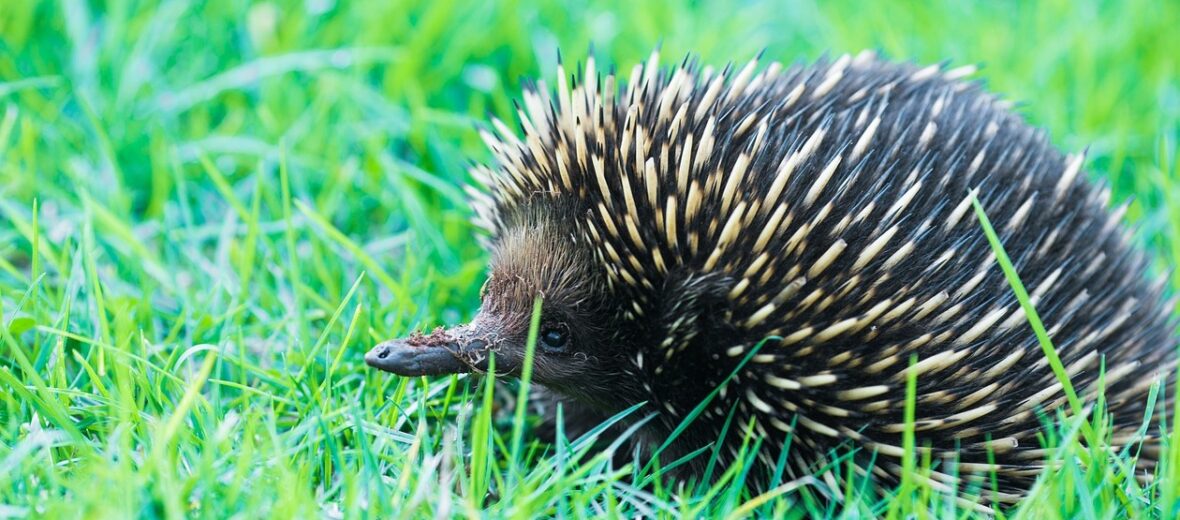
Echidnas, also known as spiny anteaters, are very interesting critters. They are similar to the platypus, as far as being odd. They hail from Australia, Tasmania, Indonesia, and Papua New Guinea. Echidnas are mammals but they also lay eggs. The echidna has spines like a porcupine, a beak like a bird, and a pouch like a kangaroo. Talk about jumbled up. There are both short and long-beaked echidnas. Sadly, the western long-beaked echidna (Zaglossus bruijnii) is listed as Critically Endangered by the IUCN. That’s 1 step away from extinction. This is due to hunting, trapping, and habitat destruction at the hands of agriculture.
First the Stats…
Scientific name: Tachyglossidae
Weight: Up to 20 lbs.
Length: Up to 30 inches
Lifespan: Up to 50+ years
Now on to the Facts!
1.) Echidnas can’t handle extreme temperatures. They use caves and rock crevices to shelter themselves from harsh weather conditions. Echidnas are found in forests and woodlands, hiding under vegetation, roots, or piles of debris.
2.) The short-beaked echidna’s diet consists largely of ants and termites, while the Zaglossus (long-beaked) species typically eat worms and insect larvae.
3.) Despite how they look, the echidna is a capable swimmer. When swimming, they expose their snout and some of their spines.
4.) The tongue of the long-beaked echidna has sharp, tiny spines that help them capture their prey.
5.) The female lays a single soft-shelled, leathery egg 22 days after mating, and deposits it directly into her pouch. An egg weighs up to 0.07 ounces and is about .55 inches long.
But wait, there’s more Echidnas!
6.) Both the male platypus and male echidna have spurs on their hind legs, but the animals use their spurs for totally different reasons. Male platypuses use their spurs as a venomous weapon and to help them compete against other males during breeding season. The male echidnas secrete a milky substance from their spurs during breeding season. Rather than acting as a venom or poison, the echidna’s substance likely serves as a means of scent communication
7.) Echidnas hibernate during the cold winter months in burrows. No matter what the time of the year, they can only enter REM sleep when they are around 77 F.
8.) Echidnas typically breed between the months of July and August. Mating for echidnas is quite unusual. Males have 4-headed penises and the females have a 2-branch reproductive tract. Only 2 of the heads are active at a time. It is thought that the 4 heads help males produce more sperm and enables them to become more competitive against other males.
Did you know…?
The echidna uses its 6 inch tongue to lap up bugs & worms. Hard pads at the base of the tongue and on the roof of the mouth grind the food into a paste for easier swallowing.
9.) A baby echidna is called a puggle and is about half an inch long & weighs only 0.02 ounces! Puggles drink their mother’s milk until they are about seven months old. But they don’t suckle on nipples. The mother secretes milk through special mammary glands and the baby laps up the milk.
10.) Echidnas can live for up to 50+ years in captivity but just about 40+ years in the wild. Still a long time!
Now a Short Echidna Video!
Also, check out the Critter Science YouTube channel. Videos added frequently!
Want to suggest a critter for me to write about? Let me know here.



